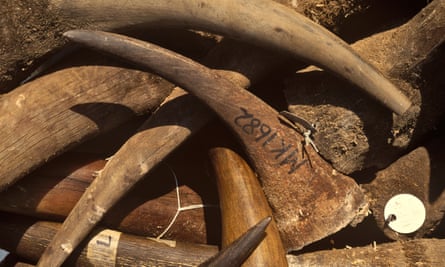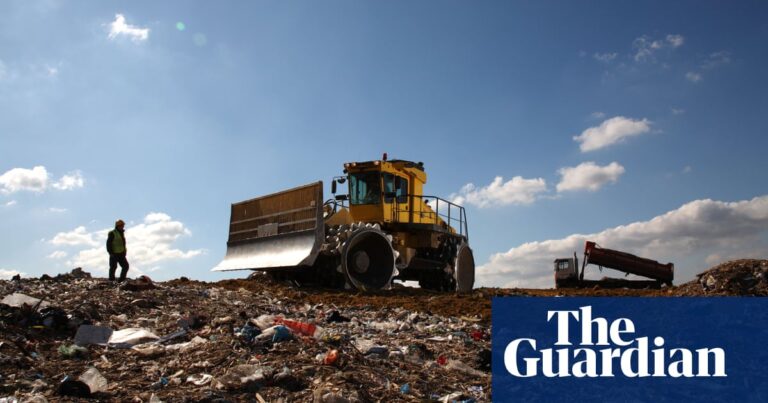International trade in rhino horns should be legalised, a leading wildlife expert has urged.
Writing in the research journal Science, Martin Wikelski argues only carefully monitored, legitimate transactions in horns can save the world’s remaining species of rhinoceros.
“A few years ago, I was very much against this idea but now looking at the grim situation we are in I believe we have to change our attitude to the issue of trade in rhino horn,” said Wikelski, of the Max Planck Institute of Animal Behaviour in Germany.
“International crime syndicates have overcome every countermeasure that conservationists have mounted to defend rhinos from poachers. The result has been a drastic drop in numbers of animals. By legalising trade in rhino horn we can take back control of the market and halt the loss.”
Wikelski’s idea would be to remove the horn and allow a new one to grow while selling the horn to make money. This could be used to fund protection for the rhino. At present, removed horn is stored in secure vaults.
However, the proposal to use stocks to create a legitimate trade in rhino horn has triggered worried responses from many conservationists, who reject the idea that such a scheme would save the rhino from the attention of poachers. Current demand for illegal rhino horn already far exceeds the potential legal supply and is projected to grow as wealth increases in consumer countries, they argue.
“In addition, a legal rhino horn market could increase demand, provide opportunities for money laundering, and complicate law enforcement’s ability to distinguish legal sources from illegal sources,” Rascha Nuijten, director of Future For Nature Foundation, wrote in a response to Wikelski’s arguments that was also published in Science.

Rhino horn is made of keratin, a protein from which hair and fingernails are made and it is said to have curative properties according to traditional Chinese medicine, despite there being no scientific evidence to support such claims.
“It was traditionally prescribed in Asian medicine in the belief that it can reduce heat and toxins from the body,” said Jo Shaw, chief executive officer of Save the Rhino International. “More recently, demand has been more status driven and rhino horn is now embedded in serious organised, transnational crime networks.”
The impact of this criminal interest has been devastating. At the beginning of the 20th century, half a million rhinos roamed Africa and Asia. By 1970, numbers had dropped to 70,000, and today there are about 27,000 left on the planet, made up of five species: two from Africa, the black and the white rhino, and three in Asia; the Javan, Sumatran and the greater one-horned rhino.
There are more than 6,000 black rhinos in Africa and more than 17,000 white, while there are an estimated 4,000 one-horned rhinos in India and Nepal. By contrast, it is thought there are fewer than 70 Javan rhinos and between 34 and 47 Sumatrans, which are both found only in Indonesia. The latter two species, along with black rhinos, are rated as being critically endangered by the International Union for the Conservation of Nature .
after newsletter promotion
Today, about half of the world’s white rhino population is privately managed. However, since the late 2000s, demand for white rhino horn and large-scale poaching activities have increased dramatically. “As a result these estate owners who act as guardians for the species are giving up their custodianship because of the costs of protecting them against determined poachers and because of threats to their own personal safety,” Wikelski told the Observer last week.
He added that at state rhino sanctuaries, such as the Kruger national park in South Africa, authorities have decided to continue to dehorn rhinos to deter poaching, with limited success. Deaths continue to be high and have destroyed rhinos’ social systems, changing their behaviour. “The answer is to create a controllable, traceable trade,” Wikelski said.
But this claim was questioned by Shaw. “Numbers of white rhinos have actually increased last year and they are not the ones that are threatened with extinction. It is the black, Java and Sumatran rhino that we really have to worry about and there is no certainty that legalising trade in white rhino horn will benefit their conservation.”
Shaw said that rather than take polarising positions promoting or opposing legalisation of international trade, it would be more helpful to tease out the practicalities of exactly how such a trade could be assured to benefit all five species of rhinos. “We would need to see the necessary level of detail and control to provide confidence that such a gamble wouldn’t end up doing more harm than good.”
Source: theguardian.com

















